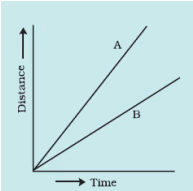CBSE Class 7 Science Chapter 8 Measurement of Time and Motion Worksheet - Free Download
Q.1. True or False
(i) The SI unit of speed is kilometre per hour.
(ii) Candle clocks were used to measure time in ancient India.
(iii) In non-uniform motion, the speed of the object remains the same.
(iv) All pendulums of the same length have the same time period at the same location.
(v) Distance is measured in metres and time in seconds.
Q.2. Fill in the blanks.
(i) The metallic ball is called the ____ of the pendulum.
(ii) The symbols of all units are written in ____.
(iii) The time taken by the pendulum to complete one oscillation is called its ____.
(iv) One microsecond is one ____ of a second.
(v) A nanosecond is one ____ of a second.
(vi) The distance-time graph for the motion of an object moving with a constant speed is a ____.
Answer the following Questions
Q.3. Give an example of oscillatory motion.
Q.4. What is uniform motion?
Q.5. An object moving along a straight line with a constant speed is said to be in uniform motion.
Q.6. What is distance-time graph?
Q.7. What is oscillatory motion?
Q.8. What is non-uniform motion?
Q.9. What is the basic unit of speed?
Q.10. A simple pendulum takes 32 s to complete 20 oscillations. What is the time period of the pendulum?
Q.11. When pendulum is said to have one complete oscillation?
Q.12. Explain how in ancient time a day, a month and a year were measured?
Q.13. The distance between two stations is 240 km. A train takes 4 hours to cover this distance. Calculate the speed of the train.
Q.14. Salma takes 15 minutes from her house to reach her school on a bicycle. If the bicycle has a speed of 2 m/s, calculate the distance between her house and the school.
Q.15. What is speedometer?
Q.16. What are quartz clocks?
For Worksheet Solutions, go to Worksheet Solutions: Measurement of Time and Motion
|
1 videos|107 docs
|
FAQs on CBSE Class 7 Science Chapter 8 Measurement of Time and Motion Worksheet - Free Download
| 1. What is the importance of measuring time in scientific experiments? |  |
| 2. How do we measure motion in everyday life? |  |
| 3. What are the different units of time, and how are they related? |  |
| 4. How does the concept of speed relate to time and motion? |  |
| 5. What are some common sources of error in time and motion measurements? |  |

















